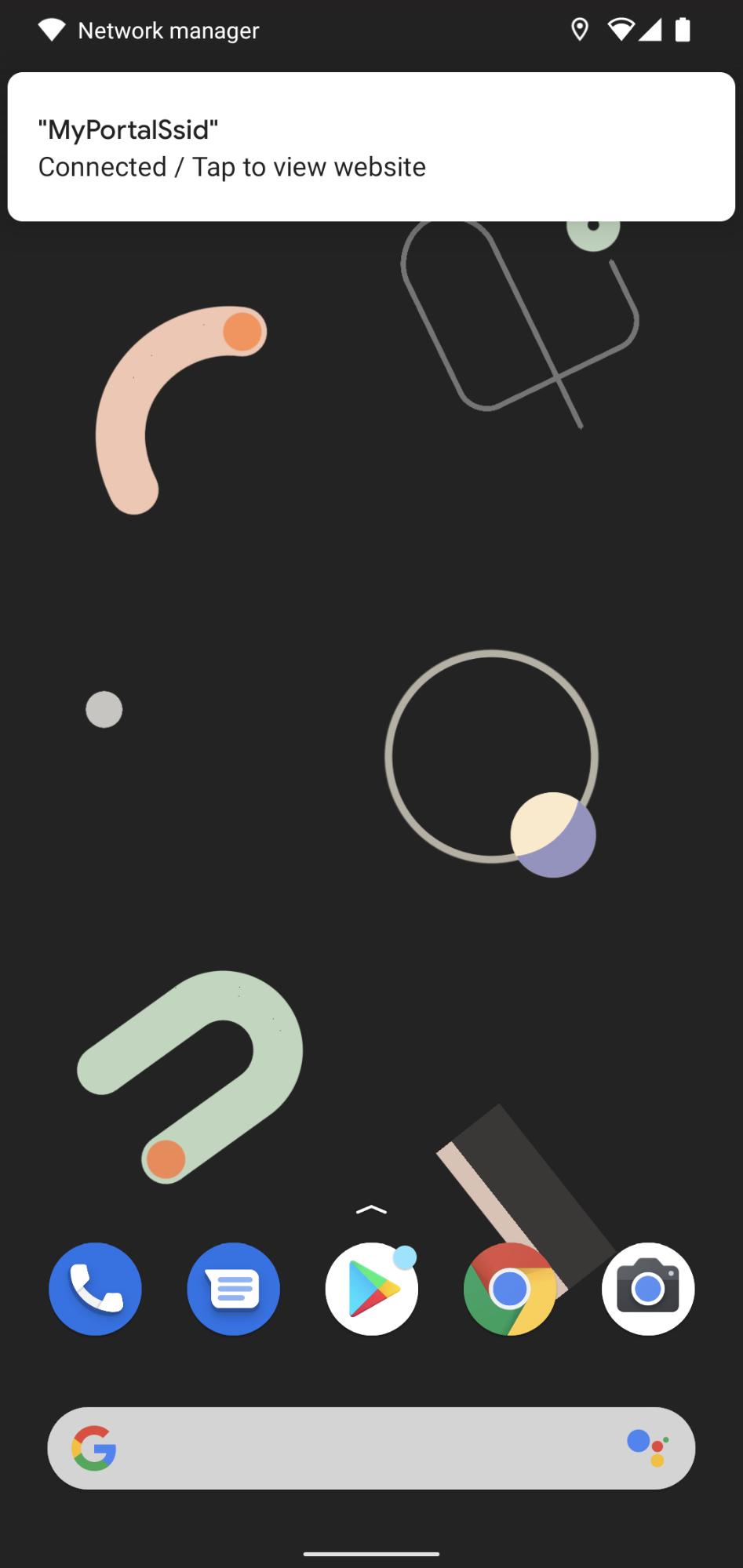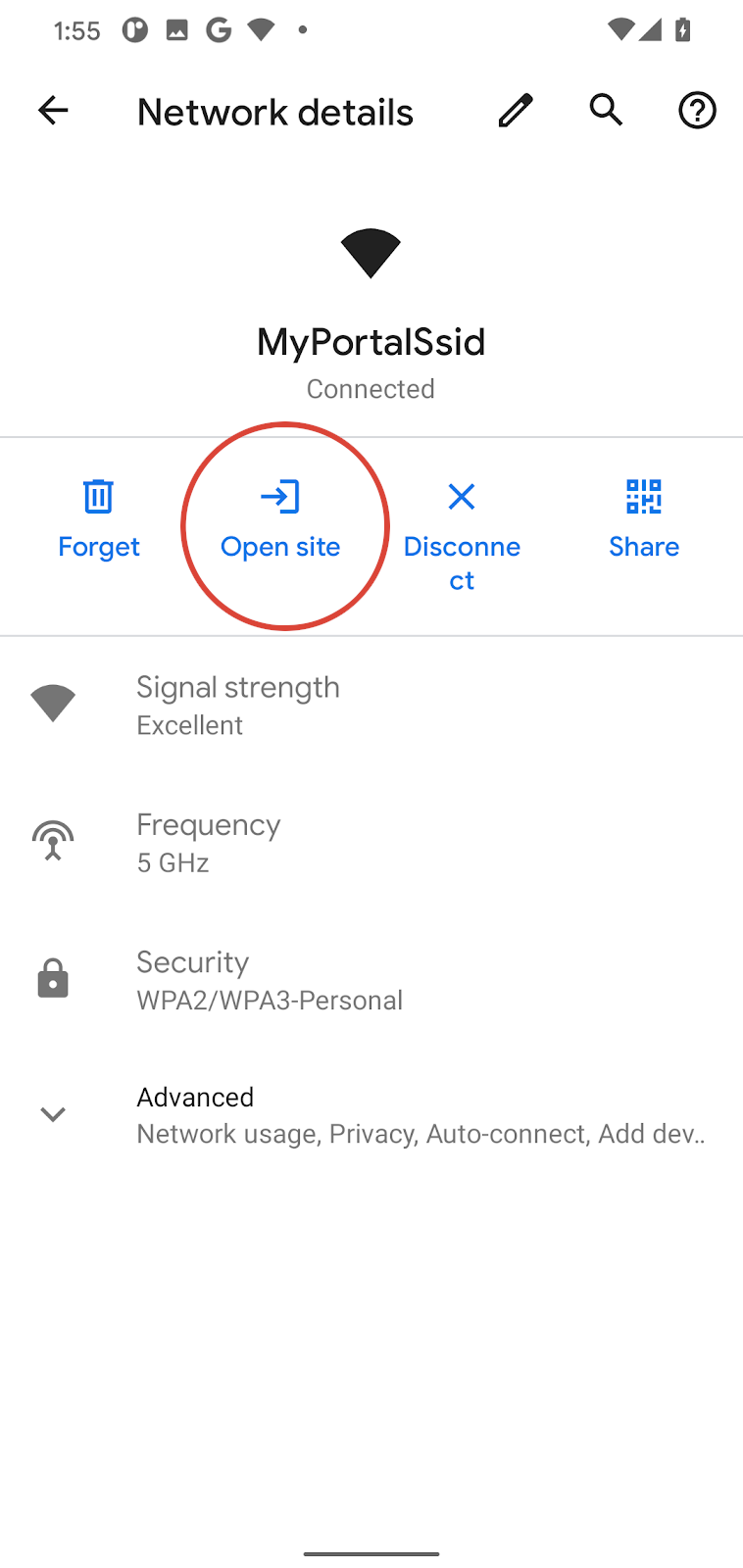Android 11 베타 2부터 시스템은 RFC7710bis 및 관련 종속 포털 API에서 설명하는 기능의 하위 집합을 지원합니다.
API는 액세스 포인트가 자신을 종속 포털로 식별할 수 있는 안정적인 방법을 제공합니다. 또한 액세스 포인트가 세션 및 장소 정보와 같은 정보를 사용자에게 게시할 수 있는 새로운 사용 사례를 가능하게 합니다.
종속 포털 감지 향상
Android 5.0(API 수준 21)부터 Android 기기는 종속 포털을 감지하고 인터넷에 액세스하려면 네트워크에 로그인해야 함을 사용자에게 알렸습니다. 종속 포털은 알려진 대상(예: connectivitycheck.gstatic.com)에 대한 일반 텍스트 HTTP 프로브를 사용하여 감지되었으며 프로브가 HTTP 리디렉션을 수신했다면 기기는 네트워크가 종속 포털이었을 것이라고 가정했습니다. 이 기법은 프로브 대상 표준 URL이 없으므로 신뢰할 수 없으며 이러한 프로브는 종속 포털 네트워크에 의해 잘못 허용되거나 차단될 수 있습니다(리디렉션되는 대신). API를 통해 포털은 로그인할 URL과 함께 로그인이 필요하다는 긍정적인 신호를 제공할 수 있습니다.
Android 11은 RFC7710bis에 설명된 대로 DHCP 옵션 114를 지원합니다. 향후 업데이트에서 라우터 알림 옵션에 관한 지원을 추가할 수 있습니다. 기기가 DHCP 핸드셰이크 중에 이 옵션을 통해 종속 포털 API URL을 얻으면 기기는 연결 직후에 API 콘텐츠를 가져오고 종속 포털 API에 따라 네트워크가 종속인 경우 사용자에게 로그인하라는 메시지를 표시합니다.
API를 사용할 수 없거나 포털이 공지되지 않았다면 시스템은 이전과 같이 계속해서 HTTP/HTTPS 프로브를 사용하여 포털을 감지하고 인터넷 연결을 확인합니다.
장소 게시 정보
Android 11은 종속 포털 API에 정의된 venue-info-url을 지원합니다. 이 URL을 통해 사용자는 브라우저에서 액세스 포인트 장소에 관한 컨텍스트별 정보를 얻을 수 있습니다. 기본적으로 사용자는 로그인한 이후 알림 또는 네트워크 설정에서 이 URL을 열 수 있습니다(그렇게 하도록 선택한 경우).

그림 1. 네트워크에서 장소 URL을 제공하면 시스템은 사용자가 그 페이지를 방문할 수 있도록 알림 팝업을 표시합니다.

그림 2. 네트워크 세부정보 화면에서 사이트를 여는 버튼
향후 사용 사례
출시 시점에 Android 11은 종속 포털 API의 기본 기능 집합만 지원하지만 출시 후 Google Play 시스템 업데이트를 통해 새로운 기능을 기기에 제공할 수 있습니다. 네트워크 운영자는 다음과 같이 향후 가능한 개선사항을 염두에 두고 종속 포털 API를 구현하는 것이 좋습니다.
- 세션 시간(
seconds-remaining)은 현재 기본 설정 앱에서 사용자에게 포털에 남은 시간을 알리는 데 사용됩니다. 로그인 URL을 통해 세션을 확장하는 기능(can-extend-session)은 API를 통해 표현되어 시스템이 만료되었거나 곧 만료될 세션에 관해 사용자에게 알릴 수 있습니다. - 사용자가 남은 데이터를 추적할 수 있도록 API를 통해 데이터 한도(
bytes-remaining)를 알릴 수 있습니다.

